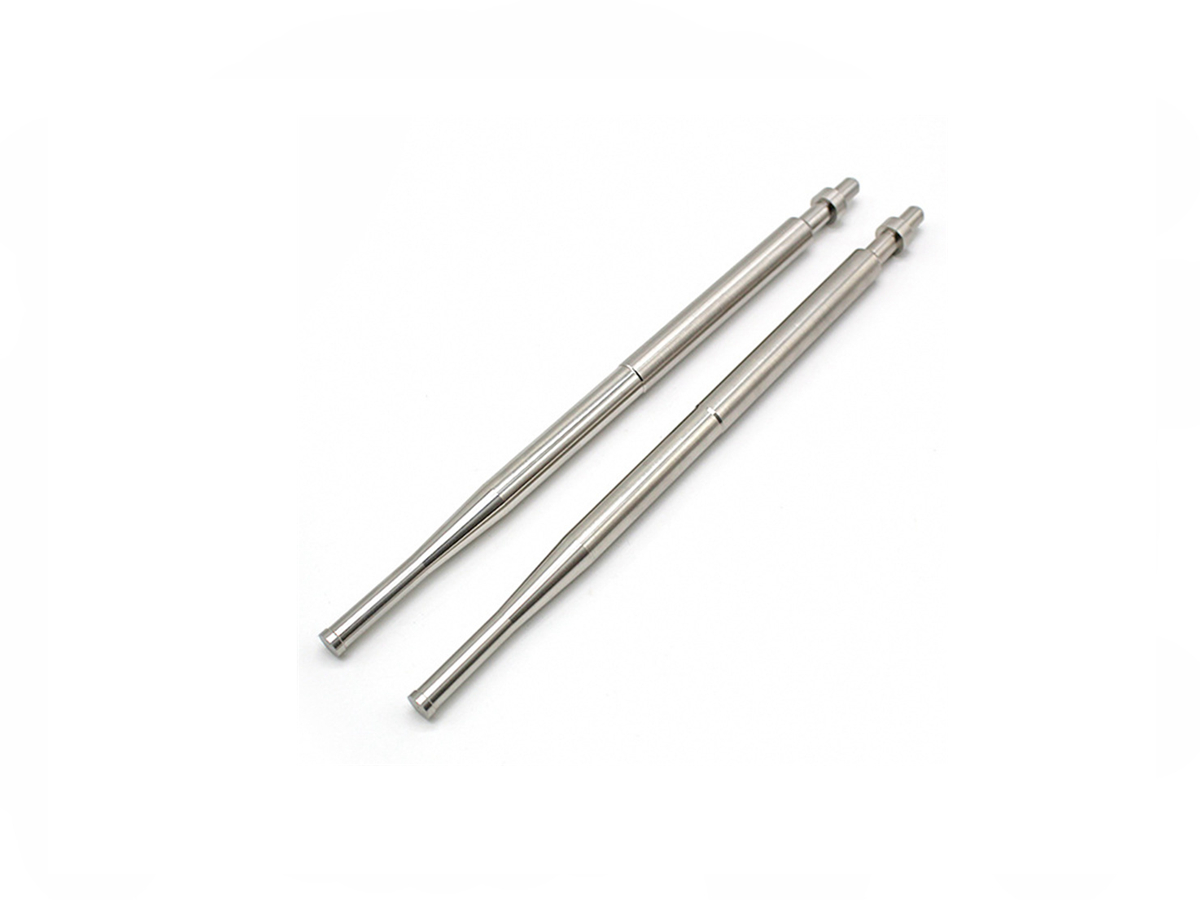Custom Machining Solutions for Medical Devices: Meeting Industry Standards
Introduction to Custom Machined Medical Device Components
Manufacturing medical devices require precision, exceptional quality, and strict adherence to industry standards. Custom CNC machining is integral to producing complex and critical components used in surgical instruments, implants, diagnostic devices, and therapeutic equipment. Commonly used materials include medical-grade stainless steels (SUS316L, SUS304), titanium alloys (Ti-6Al-4V, Ti-6Al-4V ELI), aluminum alloys (6061-T6), and medical-grade plastics (PEEK, Acetal), each chosen for their biocompatibility, mechanical strength, corrosion resistance, and sterilization compatibility.
With specialized CNC machining services, medical device manufacturers can meet exacting tolerances, comply with ISO 13485 standards, and consistently deliver high-quality products for healthcare applications.
Material Performance Comparison for Medical Device Components
Material | Tensile Strength (MPa) | Yield Strength (MPa) | Biocompatibility (ISO 10993) | Corrosion Resistance (ASTM F2129) | Typical Applications | Advantages |
|---|---|---|---|---|---|---|
480-620 | 170-310 | Excellent | Outstanding (>1000 mV breakdown potential) | Surgical instruments, implants | Superior corrosion resistance, excellent biocompatibility | |
950-1100 | 880-950 | Excellent | Excellent (>1200 mV breakdown potential) | Orthopedic implants, bone screws | High strength-to-weight ratio, exceptional biocompatibility | |
310-345 | 276 | Good | Good (>800 mV breakdown potential) | Diagnostic devices, instrument housings | Lightweight, easily machinable | |
90-100 | N/A | Excellent | Excellent (chemically inert) | Surgical tools, spinal implants | Chemical resistance, radiolucency |
Material Selection Strategy for CNC Machined Medical Devices
Material selection in medical devices is driven by the need for safety, compliance, and performance:
Stainless Steel SUS316L is ideal for implants and surgical tools due to its outstanding biocompatibility, corrosion resistance, and ease of sterilization, adhering to ISO 5832 standards.
Titanium Ti-6Al-4V provides exceptional strength, lightweight properties, and superior corrosion resistance, suitable for orthopedic implants and surgical fixation devices compliant with ASTM F136 standards.
Aluminum 6061-T6 offers lightweight construction and good corrosion resistance, making it ideal for non-implantable diagnostic equipment components requiring frequent handling and sterilization.
PEEK Plastic is utilized for implants and instruments due to its chemical inertness, excellent biocompatibility (ISO 10993 compliant), and suitability for medical imaging.
CNC Machining Processes for Medical Device Manufacturing
CNC Machining Process | Dimensional Accuracy (mm) | Surface Roughness (Ra μm) | Typical Applications | Key Advantages |
|---|---|---|---|---|
±0.005 | 0.2-0.8 | Complex surgical implants, instrument handles | Exceptional precision, complex geometry | |
±0.005-0.01 | 0.4-1.2 | Cylindrical surgical tools, fixation pins | High rotational accuracy | |
±0.002-0.005 | 0.1-0.4 | Surgical cutting edges, precision pins | Ultra-precise finishes, tight tolerances | |
±0.01-0.02 | 0.8-1.6 | Implant fixation holes, instrument assemblies | Precise hole placement |
CNC Process Selection Strategy for Medical Devices
Choosing the appropriate CNC machining method ensures precision and compliance in medical devices:
5-Axis CNC Milling enables complex geometries with ±0.005 mm accuracy, critical for creating intricate implants and ergonomic surgical tools.
CNC Turning provides precise cylindrical components (±0.005 mm) essential for surgical instrument shafts, pins, and screws.
CNC Grinding achieves ultra-tight tolerances (±0.002 mm) and smooth surface finishes required for surgical blades and minimally invasive device tips.
Precision CNC Drilling ensures accurate hole placement (±0.01 mm), vital for reliable implant fixation and consistent assembly of medical devices.
Surface Treatment Performance Comparison for Medical Devices
Treatment Method | Surface Roughness (Ra μm) | Biocompatibility (ISO 10993) | Corrosion Resistance (ASTM F2129) | Surface Hardness | Typical Applications | Key Features |
|---|---|---|---|---|---|---|
0.4-1.0 | Excellent | Outstanding (>1200 mV breakdown potential) | N/A | Stainless surgical tools, implants | Contaminant removal, enhanced corrosion resistance | |
0.4-1.0 | Excellent | Excellent (>1000 mV breakdown potential) | HV 400-600 | Aluminum device components | Increased durability, corrosion protection | |
0.1-0.4 | Excellent | Excellent (>1300 mV breakdown potential) | N/A | Implants, cutting instruments | Ultra-smooth finish, reduced bacterial adhesion | |
0.1-0.3 | Excellent | Superior (>1500 mV breakdown potential) | HV 1500-2500 | Surgical instruments, wear-resistant tools | High hardness, enhanced longevity |
Surface Treatment Selection for CNC Machined Medical Components
Selecting optimal surface treatments ensures medical devices meet stringent safety, durability, and regulatory requirements:
Passivation enhances corrosion resistance, essential for stainless steel medical devices in sterilization and surgical environments.
Anodizing improves durability and corrosion resistance (HV 400-600), which is suitable for frequently sterilized aluminum medical components.
Electropolishing provides exceptionally smooth finishes (Ra ≤0.4 µm), crucial for implants and cutting tools, reducing infection risks and improving ease of cleaning.
PVD Coating delivers superior surface hardness (HV 1500-2500), significantly enhancing surgical instruments' wear resistance and lifetime.
Typical Prototyping Methods for Medical Devices
CNC Machining Prototyping: Precise functional prototypes (±0.005 mm) for regulatory testing and verification.
Rapid Molding Prototyping: Quick manufacturing of realistic functional prototypes enabling thorough clinical testing and validation.
Metal 3D Printing (Powder Bed Fusion): Efficient prototyping (±0.05 mm) for iterative design refinements and early-stage evaluations.
Quality Assurance Procedures
CMM Inspection (ISO 10360-2): Ensures dimensional accuracy within ±0.005 mm.
Biocompatibility Testing (ISO 10993): Verifies safe material interaction with biological tissues.
Surface Roughness Testing (ISO 4287): Confirms compliance with medical standards.
Non-Destructive Testing (ASTM E1444, ASTM F601): Ensures integrity and defect-free components.
ISO 13485 Certified Documentation: Guarantees traceability, regulatory compliance, and quality management in medical device manufacturing.
Related FAQs:
Why choose custom CNC machining for medical devices?
Which materials are ideal for CNC machined medical devices?
How do surface treatments enhance medical device safety?
Why is prototyping essential in medical device manufacturing?
What quality standards are crucial in medical CNC machining?

